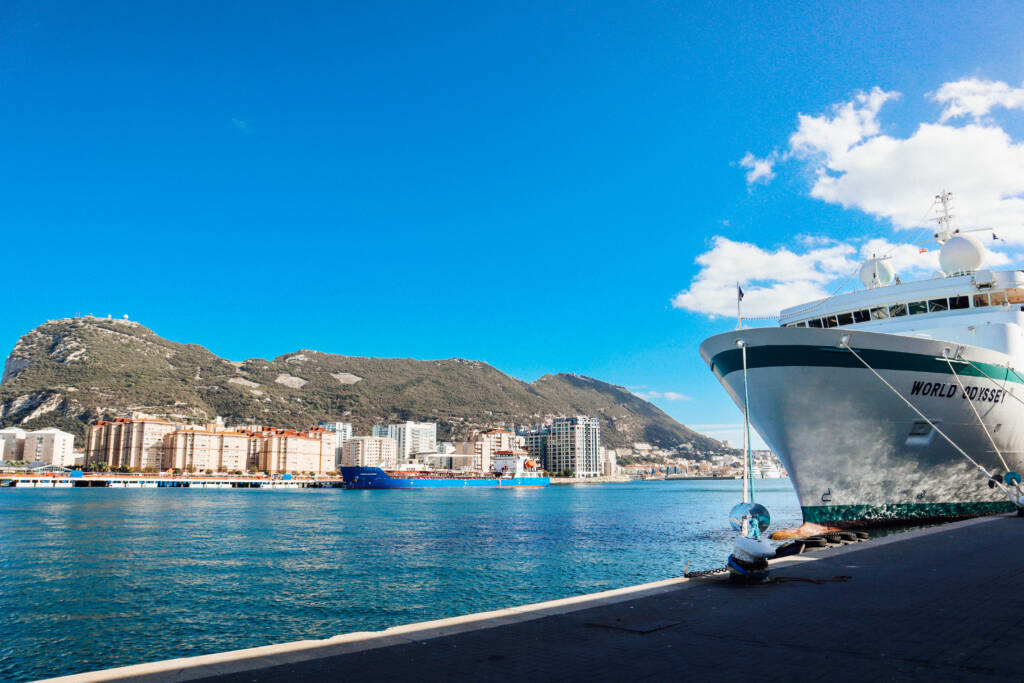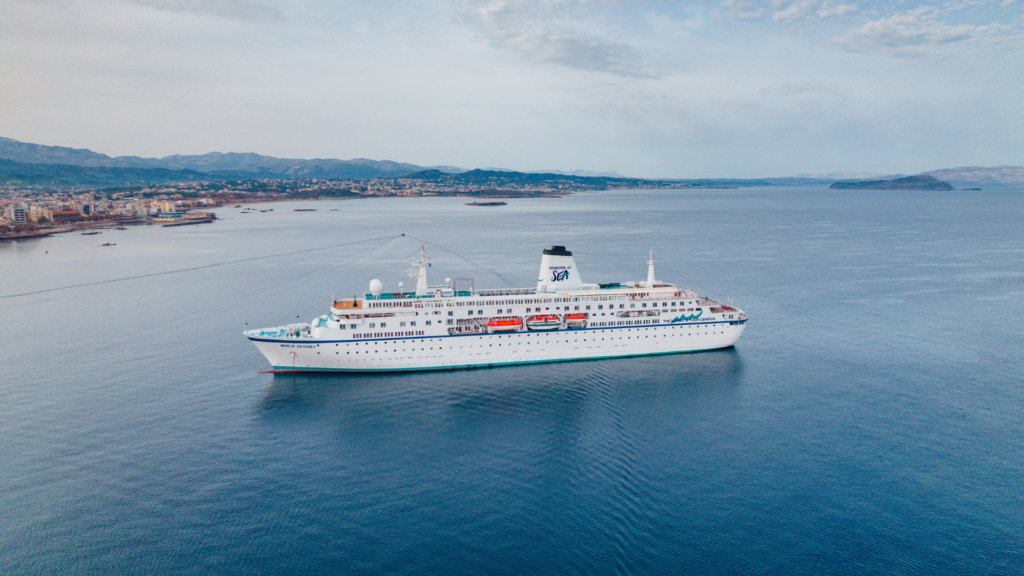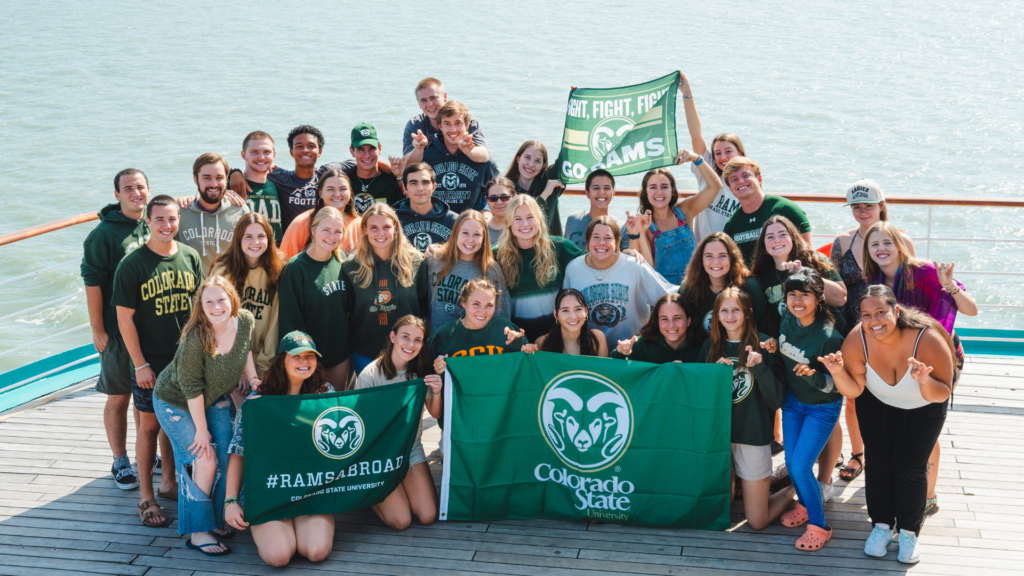Written by: Julia Hansen (Faculty)
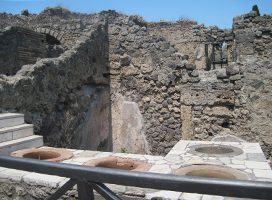 A small theatre used for music concerts. Wood-fired ovens. Public fountains. Frescoes of fresh bread, and erotic frescoes. Pedestrian crosswalks. Atriums. A sauna. The grooves of ancient carriage wheels. These are just some of the sights, or scavi, “ruins”, that we walked through, looked at, and learned about in Pompeii. Though the eruption of Mount Vesuvius in 79 CE famously buried the city in ash, the ancient city today feels quite exposed: most of its roofs and column tops destroyed or disintegrated, its walls and villas picked clean for museums, and its elaborate stone streets and its grassless Forum offering few shady nooks for avoiding the sun. Laid bare like this it is still a marvel: a chance to walk the well-planned streets of a once-thriving city; a chance to see with your own eyes the terra cotta amphorae and the bakeries and (most eerie and memorable of all) the plaster casts of humans that you had only read about and imagined before.
A small theatre used for music concerts. Wood-fired ovens. Public fountains. Frescoes of fresh bread, and erotic frescoes. Pedestrian crosswalks. Atriums. A sauna. The grooves of ancient carriage wheels. These are just some of the sights, or scavi, “ruins”, that we walked through, looked at, and learned about in Pompeii. Though the eruption of Mount Vesuvius in 79 CE famously buried the city in ash, the ancient city today feels quite exposed: most of its roofs and column tops destroyed or disintegrated, its walls and villas picked clean for museums, and its elaborate stone streets and its grassless Forum offering few shady nooks for avoiding the sun. Laid bare like this it is still a marvel: a chance to walk the well-planned streets of a once-thriving city; a chance to see with your own eyes the terra cotta amphorae and the bakeries and (most eerie and memorable of all) the plaster casts of humans that you had only read about and imagined before.
But if the partial columns and dust and the sun shining off chipped white marble made Pompeii seem initially exposed, then a wonderful part of our visit has to have been all the ways in which Pompeii emerged as even more of a mystery, as a testament to what’s missing and what we can’t recover as much as a record of what was once there.[1] A simple example of this might be the number of times we were asked to complete a scene using our imaginations: they would have had a mattress here, our guide said, pointing toward a stone bed; or: the shop owners would have pulled their door aside like this (gesturing with an imaginary door) to show that they were open for business. Although we had come to see Pompeii for ourselves, to see what had been preserved, we discovered that there was only so much we could see before we had to imagine the rest.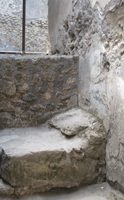
Another way in which Pompeii retained its mysteries can be attributed to how heavily mediated our experience of Pompeii was. Again, although we were there, at the site, hoping to see the actual Pompeii, it was hard not to be aware of all the ways in which Pompeii was being framed for us. First, there is the knowledge that each of us brought with us on the tour, knowledge from our Global Studies class on the ship, from history textbooks, and (in my own case) from a short story I remember reading as a child that focused on a dog bringing bread to his child-master before, loyally, dying beside him. This is to say that we had all come to Pompeii looking for something, whether we knew it or not. Then there is the inevitable framing of the tour. Francesca, our tour guide, gave an excellent tour of the city, but Pompeii is so large (I was surprised it was so vast, one of my students later said) that we couldn’t cover it all in two hours. This meant that Francesca was selecting some sites and details for us over others, a selection process that is necessary but that also creates a “version” of Pompeii.
This tour felt especially mediated because we were given small, handheld radios with an earpiece so that, as we moved through the ruins, we could always hear what Francesca was telling us. Hard to lose yourself in the past with an earpiece in your ear, an earpiece that both provides you with facts about ancient Pompeii and reminds you (by its very existence) that you exist in the twenty-first century. And finally there was evidence of time itself: the block numbers nineteenth-century archeologists used to identify parts of the site; the more recent guide posts pointing the way to the House of the Tragic Poet and the Villa of the Mysteries; and, in some ways most surprising of all, the persistence and irreverence of nature: that young trees could be blossoming within the ruins of an atrium. In my Travel Writing class on the ship, we’re reading a book (Bright Felon: Autobiography & Cities) that talks about the layers of cities in relation to the layers within ourselves. Stepping across the streets of Pompeii on the original and still functional pedestrian stones, noticing the dust collecting on my shoes, noting the evidence of all the people, over time, who have tried to understand and map this city, I felt glad to be in Pompeii with my students, glad that we had a chance to see a city with many layers together, and eager to see the ways they’ll continue to explore Pompeii in their own writing throughout the remainder of this voyage.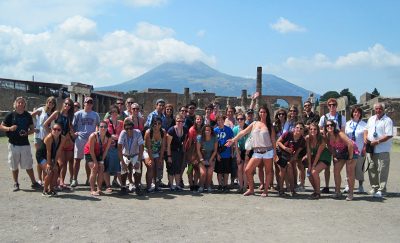
[1] My interpretation of Pompeii as a physical site that underscores absence is indebted to the work of Anjali Arondekar in her book For the Record: On Sexuality and the Colonial Archive in India (Duke UP, 2009), which argues for the role of absence in the archive.
